New supported platforms
HELIOS DHCP server
The HELIOS DHCP server, which used to be part of the PCShare product, is now included in HELIOS Base UB+. It can be used …
- … for dynamic DNS updates
- … as primary DHCP server
- … as backup DHCP server
HELIOS DHCP server supports many DHCP clients: Mac, Windows, iPhone, and printers have been tested. Custom settings can be specified by means of DHCP tags, e.g. LDAP, Router, DNS, Domain. Multiple network interfaces are supported. Once assigned, client IP addresses will be reserved for this client to avoid floating IP addresses. The backup server will automatically jump in if the main server fails.
HELIOS mDNS (“Bonjour”) server

HELIOS mDNS (“Bonjour”)
Bonjour, also known as zero configuration networking, enables automatic discovery of computers, devices, and services on IP networks. Bonjour uses industry standard IP protocols to allow devices to automatically discover each other without the need to enter IP addresses or configure DNS servers.
- Find printers (Mac OS X): From within the working application open “File > Print…”. On the Printer pop-up menu select “Bonjour Printers” and then the desired printer.
- Find services: In the Mac OS X “Terminal” program go to “File > New Remote Connection …”. In the Service column select “Remote Login (telnet)”. All available computers are then displayed in the Server column.
- Find WebShare Brandings: In Safari Preferences, on the “Bookmarks” tab, ensure that “Include Bonjour” is checked for one or more of these options: “Bookmarks Bar”, “Bookmarks Menu”, and “Collections”. Close Safari Preferences, and click on “Bonjour” in the “Bookmarks Bar”, “Bookmarks Menu”, or “Collections”. All available WebShare brandings on the local network are then listed (see also Brandings).
-
The HELIOS Admin login dialog automatically finds all available HELIOS servers:

Browse for HELIOS Admin servers via mDNS (“Bonjour”)
-
Find Tool Server workstations:
The “toolclient” application, which runs on the HELIOS server, finds its tools automatically via HELIOS mDNS (“Bonjour”).
HELIOS mDNS is comprised of:
mdnssrv
The HELIOS mDNS server implementation (“mdnssrv”) is based on the Apple Bonjour server. To provide a true zero configuration experience, Bonjour requires that devices implement three essential parts:
I) Allocate IP addresses without a DHCP server
II) Translate between names and addresses without a DNS server
III) Locate or advertise services without using a directory server
HELIOS mDNS fully implements parts II) and III).
Automatic IP address configuration of the HELIOS server is up to the operating system and networking environment. HELIOS mDNS uses the existing IP configuration.
mDNS proxy server
The HELIOS mDNS proxy server (“mdnsproxysrv”) …
- … can forward requests between network interfaces
- … allows mapping of mDNS host names to remote IP addresses
- … allows registrations for non-Bonjour devices, e.g. printers, websites
- … allows easy mDNS registrations for third-party applications
- … allows synchronizing static registrations from primary server

HELIOS mDNS proxy server connects server networks A and B
mdnstool
This new tool can be used to browse for services (similar to AppleTalk “poll”), or for test registrations.
Authentication server
The authentication server is a foundation service providing NIS, AD/PDC, local, and LDAP (see the HELIOS Authentication Server LDAP page) login authorization and user credential information for all HELIOS servers and tools.

HELIOS Authentication server overview
New SQL desktop database
The SQL desktop database holds an index of all server files, which means a high compatibility with all services.
Compatibility
- The new desktop database is compatible with all services/tools. EtherShare, PCShare, WebShare and their connected clients will not see any differences using the new SQL desktop database.
Transaction desktop file
- Power failures or unexpected reboots do not require a desktop file rebuild during startup. All existing volumes are available within seconds.
Identical byte order
- The new desktop file is compatible between different host byte orders, e.g. between Solaris SPARC and Linux systems. Access from systems with different host byte orders is possible, without any need to rebuild the desktop file for each byte order. Hence, a Linux archive solution can mount an NFS volume from a Solaris SPARC main server, and use the HELIOS “dt” tools without any byte order issues.
Unlimited files per volume
- The previous desktop database file was limited to a file size of 2 GB per volume which allowed about 25 million files per volume (depending on the file name length).
Auto flush / close
- After 60 seconds of idle time (no file changes, only read-only access) the desktop database is flushed.
Online desktop backup copies
- The live running desktop can be locked and copied into a backup directory.
Snapshot desktop flush support
-
The desktop database is flushed via
srvutil reconf desksrv.
Desktop flush and a snapshot file system copy is possible (depending on the operating system/file system). This allows continuing with the live volume read/write and using the snapshot data as a read-only volume.
HELIOS Admin
HELIOS Admin is easier to use, and has been enhanced to support the new UB+ features.

HELIOS Admin is cross-platform and can be used from Mac, Windows, and UNIX
“dt” tools
The “dt” tools now include the “dt find” command, which searches for full or partial file names in HELIOS volumes, and can optionally print the file ID. “dt find” searches the indexed desktop database, unlike the UNIX “find” command, which traverses the file system. This yields an enormous speed difference in favor of the “dt find” command.
New tools in HELIOS Base
toolclient
“toolclient” is a HELIOS Tool Server UB+ component, which is used to distribute Tool Server jobs remotely to the next workstation (i.e. installed tool server) that is able to process the job. “toolclient” is installed with Base UB+ on the main server (host).
“toolclient” is a HELIOS Tool Server UB+ component, which is used to distribute Tool Server jobs remotely to the next workstation (i.e. installed tool server) that is able to process the job. “toolclient” is installed with Base UB+ on the main server (host).
CD024: New functions
-
The desktop server supports flushing with a following 10 seconds freeze (default) or with a duration specified via the
srvmsg -c -n desksrv freeze [duration]command. This simplifies doing snapshots. The new server preferences “FreezeDefault” and “FreezeMax” allow specifying the default freeze duration and the maximum freeze duration, respectively - HELIOS Admin enhancements
- The desktop rebuild will not change the inode modification time of resource files
- Added workaround for Mac OS X “TMPDIR” variable permissions issue
- Microsoft Hyper-V and VMware ESX Server support (VMs)


 Enterprise Server
Enterprise Server
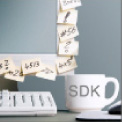 Développeurs / SDK
Développeurs / SDK
 Industrie / Commerce
Industrie / Commerce
 Editeurs de journaux / Maisons d'édition
Editeurs de journaux / Maisons d'édition
 Photographes / Studios
Photographes / Studios
 Agences de communication / publicité
Agences de communication / publicité
 Vidéo & Divertissement
Vidéo & Divertissement
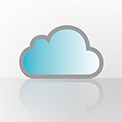 Collaboration depuis le cloud
Collaboration depuis le cloud
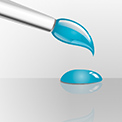 Couleur HD
Couleur HD
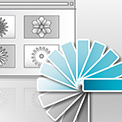 Traitements d'images
Traitements d'images
 L'épreuvage
L'épreuvage
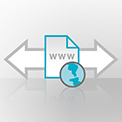 Connectivité WebShare
Connectivité WebShare
 Automatisation de flux
Automatisation de flux
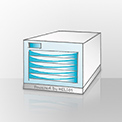 Serveur de fichiers pour l'entreprise
Serveur de fichiers pour l'entreprise
 Communiqués de Presse
Communiqués de Presse Vidéos
Vidéos  Bulletins
Bulletins  Événements
Événements